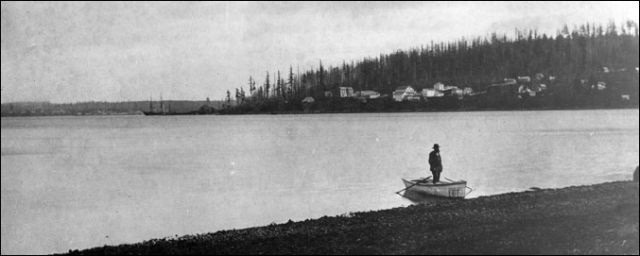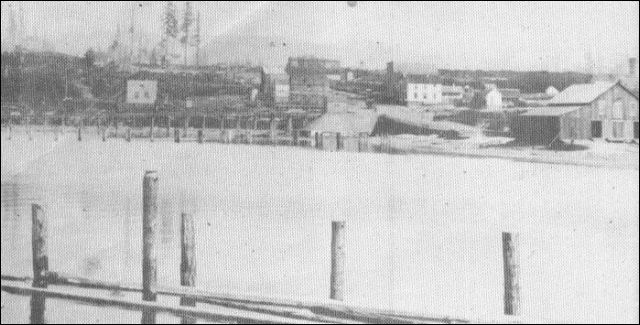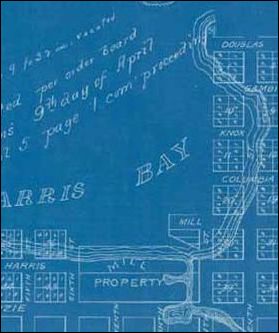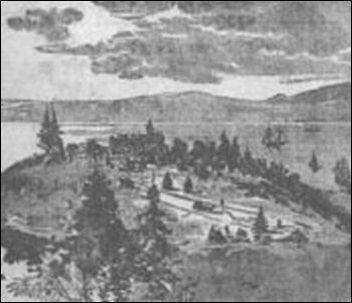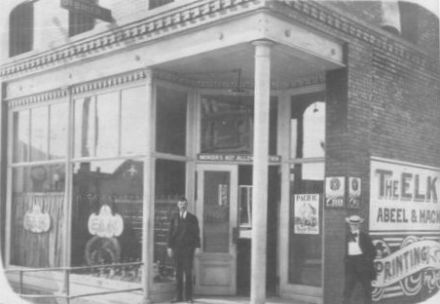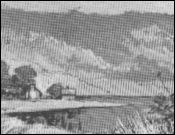This is the only known photo of Daniel J. Harris, although there are some drawings that may be a reasonable facsimile of his face and eccentric dress. This scan was made from a photo copy that Galen Biery gave me three decades ago. When you visit this site of the Whatcom Museum of History and Art, you will find information about how you can see the entire Biery collection by appointment and purchase copies. The photographer was facing northeast and you can see behind Dan and his canoe the old town of Bellingham on the flank of Sehome Hill.
Whenever we look at this photo we are reminded of our favorite, possibly apocryphal legend of Dan, which was published in the 1917 book by Herbert Hunt and Floyd C. Kaylor, Washington West of the Cascades (S.J. Clarke Publishing Co.: Seattle): "Harris made a trip to Olympia and a friend of his there presented him with two pigs. He did not know what to do with them, but taking them back home with him, he turned them out to rustle for themselves. They grew fat and Harris was at a loss to know how the trick was done until he found them on the tide flats digging clams. This gave him an idea and he followed the pigs as they followed the receding tide. They would dig out two clams and Harris at once appropriate one for his own use, treating the pigs fairly, he explained, by never taking more than he could use between tides . . . . [Dan] located at what afterwards became Fairhaven many years before the coming of [Nelson] Bennett and his Fairhaven Land Company, and in reply to a question from Bennett, [Dan] said that 'at first he did not know how he was going to find stuff enough to live on, but that when the tide went out the table was set.' "
|

 810 Central Ave.,
810 Central Ave., 